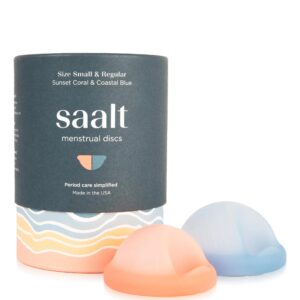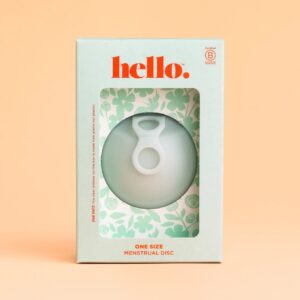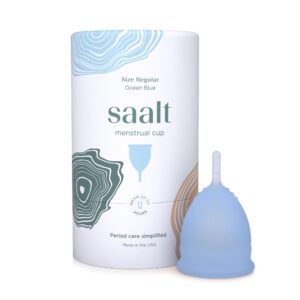10 Tips for first time menstrual cup use

So you have decided to give a menstrual cup a go. You have read the rave reviews or been recommended to try one by a cup loving friend. It may seem daunting as you look at your new purchase and wonder just how well it will work. To help you as you begin along your menstrual cup journey, we have put together a few tips to help you get the best results when using your cup for the first time.
It is important to remember that every women is different, in cycle length and flow, in cervix position, in pelvic floor strength, and the list goes on. However, following the below suggestions, should help prevent or resolve any issues you may be experiencing.
Don’t expect to be able to insert and then remove your cup perfectly the first time, and then proceed with life as normal with no further issues. In some cases, this might be exactly what happens, but experience shows that it takes a little practice to get used to using a menstrual cup. BUT, the results are always worth it! You may wish to consider wearing a panty liner for the first couple of cycles until you are confident with using your menstrual cup.
If your cup is correctly sized and inserted:
- You should not be able to feel it inside of you
- You should not experience any leaks
- No part of the cup stem should be protruding from the vaginal canal (please read about trimming the end)
1. Read the instructions
Make sure you read the instructions that come with your cup, BEFORE using it. This may seem obvious, but we know many of us get so excited about our new period cup, that we just jump right in without fully knowing what to do.Get a grasp of the different folding techniques, so that you can try each and find the one that suits you best. For all menstrual cups, use only as directed and always read the label. If any symptoms occur from the use of the cup, please see your doctor/healthcare professional.
2. Relax
Inserting a menstrual cup will be easier when you are relaxed. Try your menstrual cup for the first time when you are not having a period. If you have difficulty inserting or removing it, at least you won’t be dealing with rampant hormones, blood, and stress at the same time. DO NOT leave the cup in place, simply try inserting, walking around, and then removing it.
3. Wet the cup
It is easier to insert a cup when it is wet. For this reason you may want to dampen the entrance to your vagina with water or a water-based lubricant as well as the rim of the cup. Many women find it helpful to learn how to insert their cup while in the shower.
4. Get the correct angle
Do not insert a menstrual cup in a straight up (vertical) angle. For correct insertion, it needs to be put into the vagina at a horizontal, 45 degree angle. Aim towards the base of your spine/tip of your tailbone. Squatting down with knees spread open is often a good way to first insert your menstrual cup. You should stop inserting the cup as soon as the cup and end of the stem can no longer be seen or felt outside the vaginal opening.
5. Wait for the 'pop'
To ensure the cup doesn’t leak, it needs to achieve a good suction seal around the vaginal wall. Once you insert the cup, it needs to ‘pop’ open to form the seal. Some people feel this pop, others do not. Gently run your finger around the base of the cup. If it feels flat or scrunched at any spot, it probably hasn’t popped open properly. Grip the base of the cup and try rotating it 360 degrees. Then give it a gentle downwards tug to check the seal. If that doesn’t work, remove the cup and try again. You may also want to try performing a few pelvic floor exercises (Kegels) after inserting the cup, as this can help establish a proper seal.
6. Keep it low
Many women make the mistake of placing the cup too high in their vagina. It should sit low in the vagina (lower than a tampon), and ideally, not over the opening of your cervix. The end of the stem should be sitting no more than 1cm from the vaginal opening. Nothing should be sticking out, but it should be only just inside you.
In some cases the menstrual cup may rise up higher and then settle in it’s own position. Do not be alarmed by this, it just means you may have to reach a little further in to remove it. If the cup is sitting right against your cervix, you may experience some discomfort. Try re-inserting the cup again.
7. Partially insert, then open
Another tip is to only insert the first part of the cup and then try opening it just inside the vaginal canal. One it has opened, you can gently push it up into the correct position.
8. Trim the stem
The stem of the menstrual cup should not be protruding outside your vagina, or irritating your labia. Some women who have a low cervix, may find that this happens. To combat this, simply trim the end to a length where it will not be a problem. Please note: DO NOT trim the end until you are able to easily remove your cup. Trim no more than half a cm at a time, and try your cup again to see if it is more comfortable.
You can also try turning your menstrual cup inside out (so the stem is on the inside of the cup). Then insert as usual. This shortens the cup, without removing the stem, and is a good way to try a stemless cup length.
9. Remove correctly
Do not pull on the stem! Use the stem simply as a guide to find the base of the cup. You can also read our cup removal tips to make removing your cup easier.
If the cup is hard to reach, try squatting (to shorten the vaginal canal), and bearing down so as to push the cup down your vaginal canal.
If the cup is slippery and hard to grasp when you try to remove it, you can use a tissue to wipe the base before pulling it out.
10. Get the right size
Often leaking issues or discomfort may be due to a cup that is the wrong size for your needs and stage of life. Check your cervix height before purchasing a menstrual cup or disc, and make sure you read the sizing guidelines for the particular brand you are purchasing, to ensure you have a cup that will fit your particular anatomy.
Frequently asked questions:
Learn more about menstrual cups with the FAQ’s below.
No. A menstrual cup should not cause any pain. In fact you should not be able to feel a correctly sized and inserted menstrual cup at all. If you can feel your cup or experience any pain, you may need a different style or size cup.
The recommendation by the Australian TGA is that a menstrual cup can be worn for up to 12 hours or overnight.
On average, menstrual cups hold around 30ml of fluid. This is compared to a regular tampon that holds approximately 5mls or a super tampon that holds around 10-12mls. There are also high capacity cups and menstrual discs which can hold up to 70ml.
Yes. A menstrual cup is a leak free alternative to tampons that is inserted into the vagina to collect menstrual fluid. It can be worn while swimming and during any other form of sporting activity.
There are several advantages to a menstrual cup compared to disposable pads or tampons.
- A menstrual cup can be worn for up to 12 hours before needing to be emptied.
- Cups are reusable and can last for up to 5 years. This saves you money and reduces landfill.
- Menstrual cups do not interfere with your natural vaginal flora, making them a healthy alternative for down under.
- They can reduce menstrual odour.
- No strings, wings, or leaks.
- Cups can be worn during any of your favourite activities including swimming, bike riding, gymnastics, running, and horse riding.
- Cups are convenient and portable. One cup is all you need and it is easy to take with you wherever you go!
A menstrual cup is a bell shaped cup that collects rather than absorbs menstrual fluid. When inserted correctly the rim of the cup creates a seal around the vaginal walls preventing leaks. Once full, the cup is removed, emptied, and then re-inserted.
No, a menstrual cup cannot get lost inside of you. A cup cannot go any further than the cervix and will always remain in the vaginal canal. If you have trouble reaching your cup, you may have a high cervix and a cup that is too short. Please read our removal tips for help.
Explore some of our favourite beginner menstrual cup brands:
-
Hello Disc
$ 59.95Original price was: $ 59.95.$ 54.95Current price is: $ 54.95.Rated 4.84 out of 5
Learn more about menstrual cups and discs:
Which Menstrual Cup?
Which Menstrual Cup? Deciding which brand of menstrual cup to buy can be daunting. While many women will have success with any brand of cup, there are some instances where it may be a case of trial and error. Or, depending on cervix height and your level of menstrual flow, there may only be a
5 Menstrual Cup Removal Tips
How to Remove a Menstrual Cup: 5 Easy Tips Removing your menstrual cup is easy! Follow these tips to get a menstrual cup out in seconds. For some women, removing the cup is a quick and easy process, while others get overwhelmed and feel like it might be stuck. The good news is that most
Menstrual Cup Sizing Guidelines
Menstrual Cup Sizing – which size cup do you need? This article is for anyone who is confused about which size menstrual cup to buy. While each brand of menstrual cup may differ slightly, when it comes to sizing your menstrual cup, there are five main factors to consider. 5 Menstrual Cup Sizing Tips While







